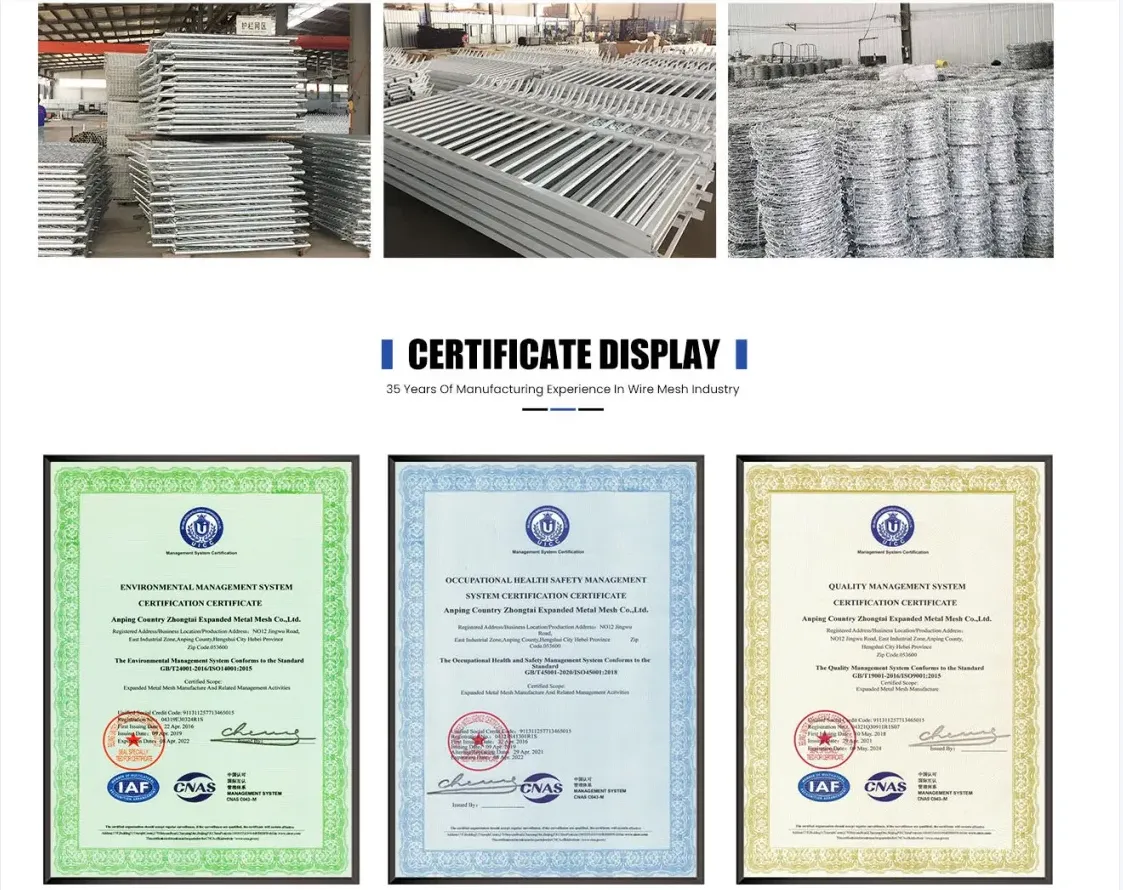Understanding Perforated Plate Steel Applications and Benefits
Perforated plate steel is a versatile material that has found application across various industries due to its unique properties and functionality. Consisting of sheets of steel that have been punctured with a series of holes, this material offers not only aesthetic appeal but also structural benefits that enhance its usability in numerous settings. In this article, we will explore the characteristics, applications, and advantages of perforated plate steel.
Characteristics of Perforated Plate Steel
The primary feature of perforated plate steel is the array of holes that can vary in size, shape, and pattern. These holes can be round, square, or custom-designed, depending on the specific requirements of the application. The spacing between the holes and the thickness of the steel are also customizable, making this material suitable for a wide range of engineering and architectural needs.
One of the most significant benefits of perforated plate steel is its ability to provide light and airflow while maintaining structural integrity. The holes reduce the weight of the material compared to solid sheets of steel, making it easier to handle and install. Additionally, perforated plates can effectively reduce noise levels, act as a filter, and enhance decorative elements in various designs.
Applications of Perforated Plate Steel
Perforated plate steel is found in a diverse array of applications. In the construction and architecture sectors, it is used for facades, sunshades, and railing systems, allowing for innovative design solutions that incorporate both function and style. The aesthetic versatility of perforated plates makes them popular in modern architecture, where they contribute to the overall visual appeal of buildings.
In industrial settings, perforated plates are used in filtration systems, screens, and grates. Their ability to allow the passage of air or liquids while providing structural support makes them ideal for separating solids from liquids in processes such as mining, wastewater treatment, and chemical manufacturing. Moreover, in the agricultural sector, perforated steel is often utilized in silos and grain storage to facilitate aeration and prevent spoilage.
perforated plate steel

The automotive industry also benefits from perforated plate steel. It is commonly used in the manufacturing of components such as heat shields and exhaust systems, where heat dissipation and weight reduction are critical. The ability of perforated plates to enhance performance while ensuring durability in extreme conditions makes them a preferred choice in this fast-paced sector.
Advantages of Perforated Plate Steel
One of the most compelling advantages of perforated plate steel is its cost-effectiveness. While providing the same structural capacity as solid plates, it tends to be lighter and requires less raw material, which can lead to savings in production and transportation costs.
Additionally, the customization options available with perforated plates allow for tailored solutions to meet specific needs. Businesses can design their perforated plates to match branding, performance, or aesthetic requirements seamlessly. They can be finished in various ways, such as powder coating or galvanization, to enhance corrosion resistance and prolong lifespan.
Furthermore, perforated plate steel contributes to sustainability efforts. The efficiency of manufacturing and the reduced weight can lower energy consumption during transportation and installation, thereby minimizing the material's overall environmental impact.
Conclusion
In summary, perforated plate steel is a highly functional and visually appealing material that serves a multitude of purposes across different industries. Its characteristics of lightweight, durability, and design flexibility position it as a smart choice for architects, engineers, and manufacturers alike. Whether used for aesthetic enhancements in architectural designs or for functional applications in industrial processes, perforated plate steel continues to be a vital resource in today's material repertoire. As industries evolve and seek out sustainable and efficient solutions, the role of perforated plate steel is sure to grow, making it an essential material for the future.
-
The Best Metal Mesh Solutions: Expanded Aluminum Metal vs. Expanded Stainless Steel Metal
NewsSep.10,2024
-
Round Perforated Sheets vs. Hexagonal Perforated Sheets vs. Embossed Perforated Sheet Metal
NewsSep.10,2024
-
Perforated Metal Sheets
NewsSep.10,2024
-
Experience The Excellence Of Stainless Steel Grating
NewsSep.10,2024
-
Discover the Versatility Of Metal Mesh Expanded Forming Machines
NewsSep.10,2024
-
Discover The Advantages Of Steel Grating For Sale
NewsSep.10,2024
Subscribe now!
Stay up to date with the latest on Fry Steeland industry news.

